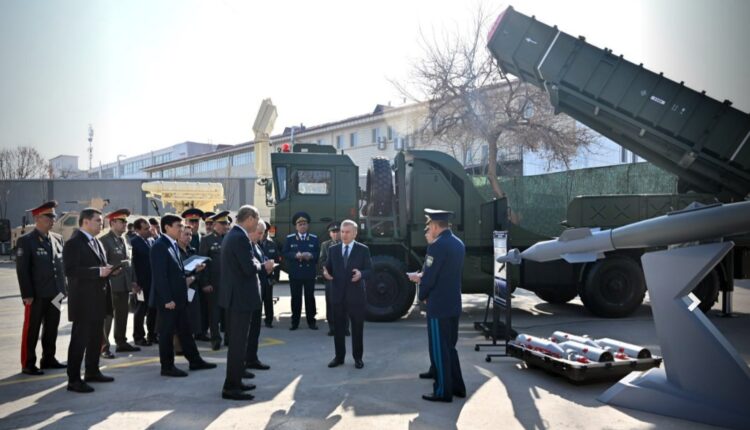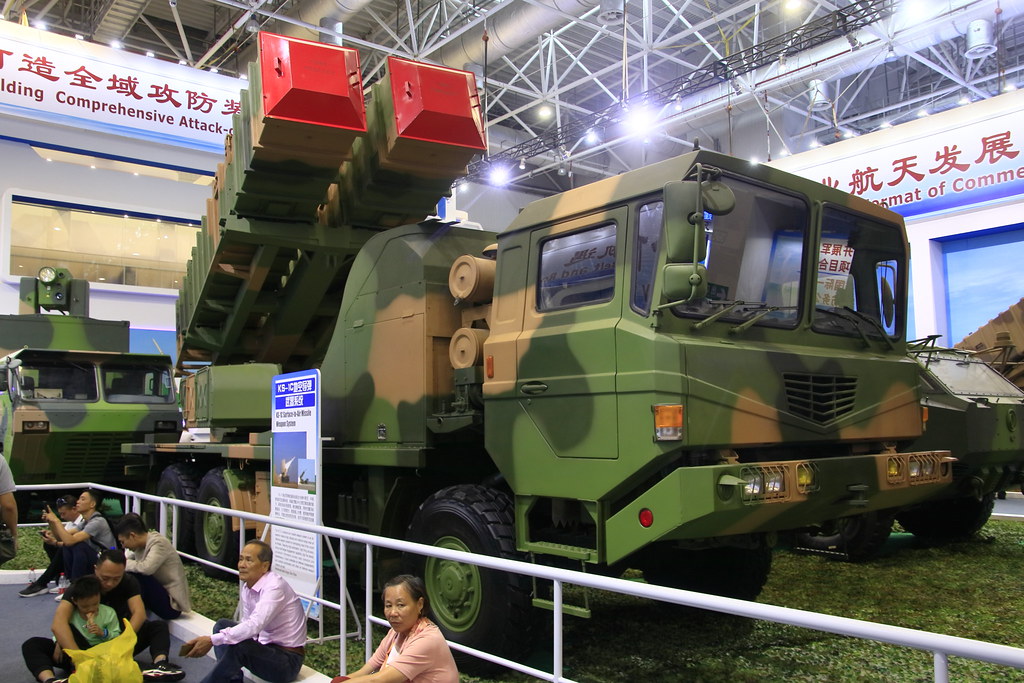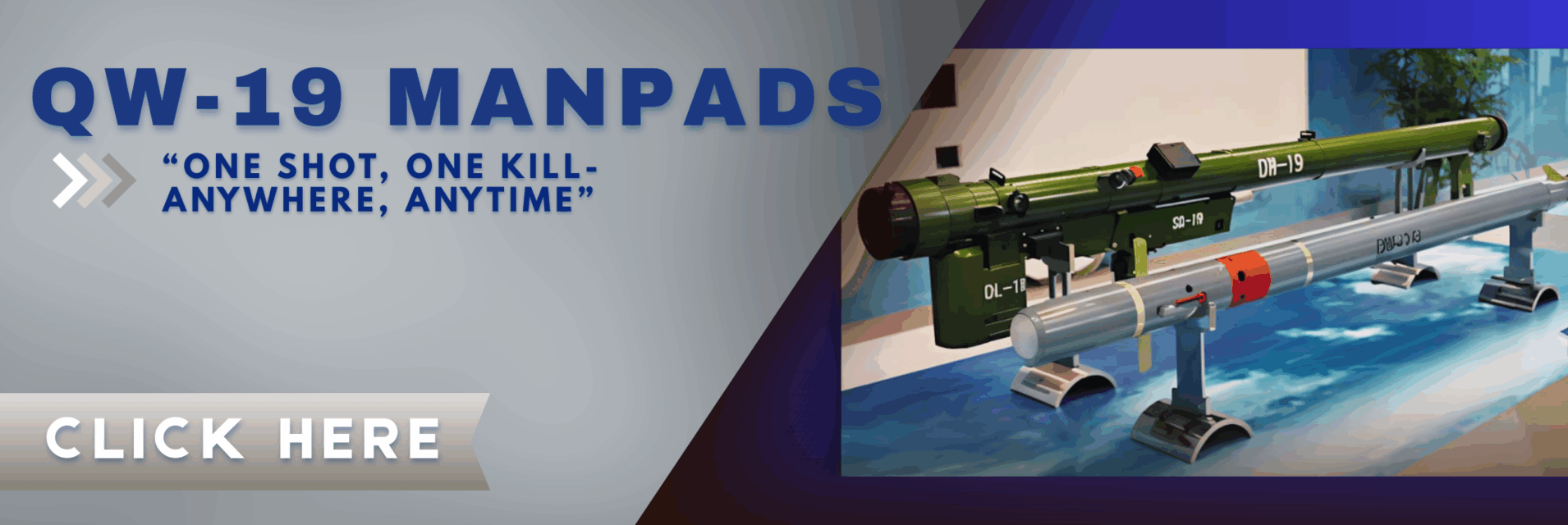Uzbekistan Shifts Away from Russian Arms, Deepens Military Ties with China
The latest images leave little doubt—Uzbekistan is deepening its defense partnership with China. This procurement marks a significant turning point in the country's defense strategy, signaling a shift toward greater diversification in its military acquisitions.

(DEFENCE SECURITY ASIA) – On February 21, there was an unexpected sight during Uzbekistan President Shavkat Mirziyoyev visit to the Center for Innovative Technologies —Chinese-made air defense systems prominently displayed alongside the nation’s own domestically developed defense products, raising intrigue about their origin and significance.
The mystery surrounding their arrival in Uzbekistan remains unsolved—when and how these air defense systems were acquired is still unknown.
Yet, their very presence sends an undeniable message: Uzbekistan now possesses these formidable assets.
Among the newly observed systems are the FM-90 short-range air defense system and the KS-1C medium-range air defense system, both sourced from China.
With this acquisition, Uzbekistan appears to be following in the footsteps of its neighbor, Turkmenistan, which has also integrated a layered air defense system, including the FD-2000, FM-90, and KS-1C.
The latest images leave little doubt—Uzbekistan is deepening its defense partnership with China. This procurement marks a significant turning point in the country’s defense strategy, signaling a shift toward greater diversification in its military acquisitions.

For decades, Uzbekistan relied heavily on Soviet-era and later Russian military equipment.But times have changed.
In recent years, Tashkent has actively sought alternative suppliers, forging closer defense ties with China and Türkiye.
These newly acquired Chinese air defense systems, designed to intercept enemy aircraft and missiles at short and medium ranges, are now fully operational within Uzbekistan’s armed forces.
Their deployment reflects Uzbekistan’s determination to enhance its military capabilities while reducing its dependence on Russian and Western defense systems.
Until recently, the Uzbek military modernized its aging Soviet-era arsenal with Russian assistance.
Now, however, the country is charting a new course, embracing a more diverse and self-reliant approach to military procurement.
This strategic shift is driven by an urgent need to adapt to evolving regional security threats. In this dynamic landscape, China has emerged as a key supplier, capitalizing on its growing influence in Central Asia’s defense sector.

Beyond merely providing advanced weaponry, Beijing is facilitating technology transfers, enabling Uzbekistan to gradually build its own domestic defense industry—a move that could significantly reshape the region’s military balance.
Uzbekistan’s ambitions extend beyond its own borders. At IDEX-2025 in Abu Dhabi, the country made a bold statement by showcasing over 100 models of its domestically produced military equipment.
Among the standout exhibits were the “Arslan 8×8” and “Arslan 6×6” armored vehicles, alongside the “Tofon” self-propelled howitzer—all of which have drawn keen interest from international defense partners.
The FM-90, an advanced short- to medium-range air defense system developed by China, is based on the HQ-7 platform. Engineered to neutralize aerial threats, it can intercept fighter jets, helicopters, cruise missiles, and drones with pinpoint accuracy.
Equipped with active radar-guided missiles, the FM-90 boasts an engagement range of 15–25 km and an operational altitude of up to 6 km. It features a target acquisition and tracking radar, ensuring all-weather operational capability.
Highly mobile and rapidly deployable, the FM-90 is a formidable shield against enemy air incursions, capable of protecting critical infrastructure and military formations.

It is also enhanced with cutting-edge electronic warfare countermeasures, making it a resilient force on the modern battlefield.
The KS-1C, a medium-range surface-to-air missile system based on HQ-12 technology, is designed to track and destroy high-speed aerial threats, including fighter jets, cruise missiles, and drones at distances of up to 70 km, with an operational altitude reaching 27 km.
Utilizing semi-active radar guidance, the KS-1C’s sophisticated search and tracking radars ensure effective target detection and engagement, even in challenging environments.
Its advanced electronic warfare countermeasures further fortify it against enemy jamming and interference.
With a modular design and high mobility, the KS-1C is a crucial component of Uzbekistan’s expanding air defense network, offering critical protection for military bases, airfields, and key infrastructure.
Uzbekistan’s latest moves signal a profound transformation in its military doctrine.

As regional tensions continue to evolve, the country is reshaping its defense landscape, seeking greater autonomy and diversified partnerships.
The deepening defense ties between Uzbekistan and China—evidenced by these advanced air defense acquisitions—underscore a strategic realignment that could redefine security dynamics in Central Asia for years to come.
— DEFENCE SECURITY ASIA


